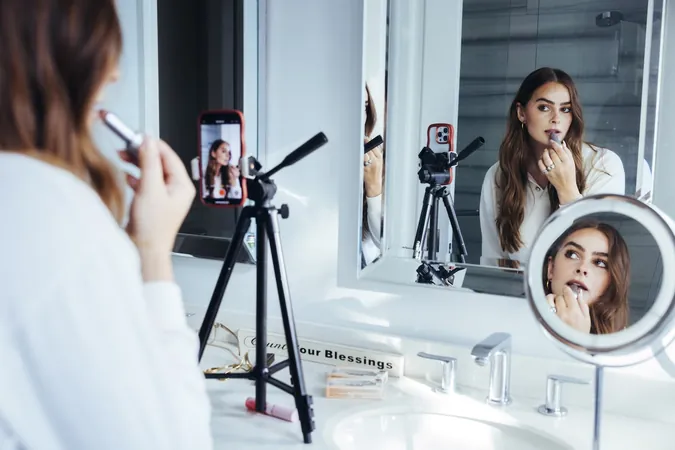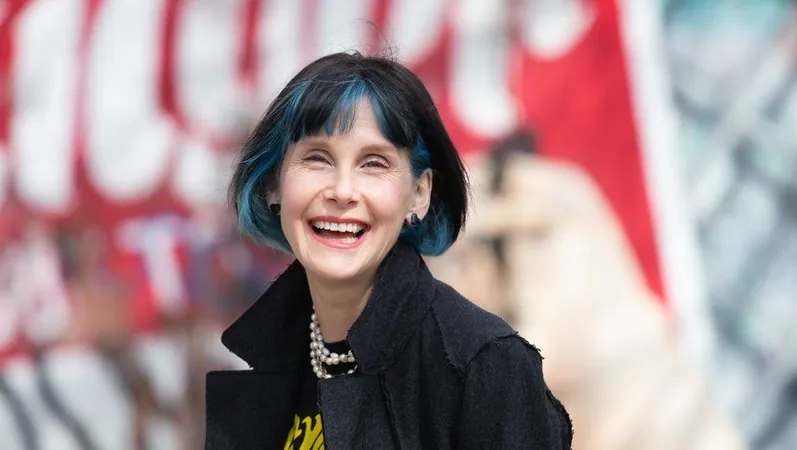
The Hidden Struggles of the $250 Billion Digital Influencer Economy: How Much do They Really Make?
2024-11-11
Author: Jacques
Being a digital influencer in today's fast-paced world can seem glamorous, but the reality is often much more taxing. Take Rachel Passarelli, a 29-year-old content creator based in Toronto, who experiences a constant battle with the elements. The weather is a significant factor in her work: sunny days are gold, while overcast skies can lead to hours of unnecessary editing or lost opportunities. "I’m always looking to capitalize on a sunny day," she admits.
Rachel is one of many in the burgeoning digital creator economy, which is valued at a staggering $250 billion according to Goldman Sachs. Influencer recommendations have become a cornerstone for consumers, with nearly half relying on these endorsements before making purchasing decisions.
Her impact is evident: with 14,000 followers on Instagram and 2,500 on TikTok, Rachel can earn upwards of $30,000 in a lucrative month, although slower months might bring in between $10,000 and $12,000. However, her career demands juggling multiple jobs and working 50 to 80 hours a week while her earnings fluctuate with shifting trends and algorithms—an unsettling reality for many creators.
The rise of influencer marketing has seen brands invest significantly in this channel—up from 37% in 2017 to 85% today, according to Influencer Marketing Hub. Despite this surge, many creators find themselves stretched thin across multiple jobs and investing heavily back into their work without seeing commensurate returns. They continually navigate a space where some companies may prioritize profit over fair compensation.
Rachel dedicates countless hours to her craft, feeling an unrelenting pressure to generate content daily. “Every outing feels like work now; whether it's dinner or attending an event, I’m always creating,” she explains. This commitment goes hand in hand with significant expenses, including two high-capacity phones and an average monthly expenditure of $3,000 on personal care and travel—though fortunately, many of these costs can be written off during tax season.
Not every influencer enjoys the same financial perks. Food influencer Robin Radomski often finds herself inundated with invitations from restaurants, yet frequently bears the cost of meals and transportation out of her own pocket. On a bad month, Robin earns $2,400 through her food content platform, Blondeats, but on a good month, her take-home can surge above $25,000.
The disparity in earnings can often lead to frustration for influencers. Many brands overlook the extensive effort poured into creating high-quality content. "I’ve had clients assume that editing a video takes mere seconds," reflects Robin. "If they don’t appreciate the work that goes into our content, that’s a major red flag."
With no set industry standards for compensation, influencers must harness their negotiation skills to advocate for fair pay. Gary Lipovetsky, a creator consultant, asserts that similar audience sizes can yield vastly different incomes, ranging from $300 to $3,000 for a post depending on the creator's negotiation abilities.
Growing numbers of agencies and tools aim to streamline the connection between influencers and brands. Companies like INF Agency boast talent that can earn six-figure incomes, and some even reach up to seven figures through strategic partnerships and affiliate marketing. "Our mission is to empower creators to make this their full-time gig," says Jessica Thomas Cooke from INF.
Despite the allure of creative independence, many influencers still consider their social media presence a side hustle. Platforms like Heylist are even helping influencers with smaller followings monetize their work. CEO Vicky Boudreau describes this as "matchmaking for brands and influencers," making it easier for creators with niche audiences to find brand collaborations.
Even nano-influencers like Chrislène Jean Baptiste, with a modest following of 4,000 on Instagram, can earn between $300 to $1,800 per brand campaign while also benefiting from gifted products. Nevertheless, the pressures persist. Marina Santarossa, another creator, states, "I work far more than I ever did at a full-time desk job. It's fun, but it consumes an immense amount of energy."
At the heart of it all is the unremitting need for content creation. The more influencers produce, the more successful they can become. In a world where algorithms can quickly turn on creators, the fear of missing out can be palpable. "Missing a post could mean losing a chance to go viral," says Marina, underscoring the brutal reality of sustaining a career in the unforgiving digital landscape.
In conclusion, as the digital influencer economy expands, the journey for many creators is filled with both promise and peril, and understanding their challenges can shed light on the complex relationship between creativity and compensation in this burgeoning industry.









 Brasil (PT)
Brasil (PT)
 Canada (EN)
Canada (EN)
 Chile (ES)
Chile (ES)
 España (ES)
España (ES)
 France (FR)
France (FR)
 Hong Kong (EN)
Hong Kong (EN)
 Italia (IT)
Italia (IT)
 日本 (JA)
日本 (JA)
 Magyarország (HU)
Magyarország (HU)
 Norge (NO)
Norge (NO)
 Polska (PL)
Polska (PL)
 Schweiz (DE)
Schweiz (DE)
 Singapore (EN)
Singapore (EN)
 Sverige (SV)
Sverige (SV)
 Suomi (FI)
Suomi (FI)
 Türkiye (TR)
Türkiye (TR)